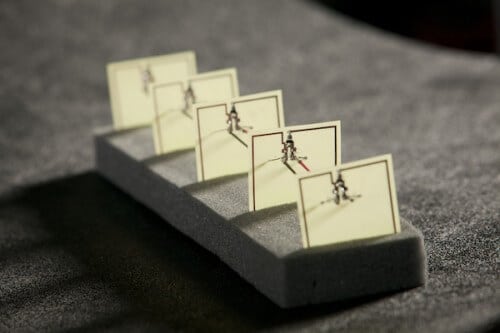Researchers from the Duke University School of Engineering have succeeded in capturing signals from the microwave spectrum using inexpensive materials. In addition, they developed a device to collect these signals with an efficiency similar to that of modern solar panels.

Researchers from the Duke University School of Engineering have succeeded in capturing signals from the microwave spectrum using inexpensive materials. In addition, they developed a device to collect these signals with an efficiency similar to that of modern solar panels.
The device wirelessly converts the microwave signal into a direct electric current capable of charging a cell phone battery or other portable electrical devices, according to an article published in the scientific journal Applied Physics Letters. The facility operates according to a principle similar to that on which solar panels are based, which convert the sun's energy into electric current. However, this energy collection device is able to harness for its activity the signal received from other energy sources, including voice signals or signals from Wi-Fi networks, according to the researchers.
The key to the development of this facility lies in the nature of its components - metamaterials (metamaterials, Wikipedia), which are engineered structures capable of capturing different types of energy and being used in a variety of applications. The researchers used a collection of five electrically conductive fiberglass and copper fibers soldered together on a printed circuit board in order to convert microwaves into 7.3V of electrical energy. In comparison, chargers for USB storage devices for small electrical devices provide only 5V.
"We strived to achieve the highest possible energy efficiency," says the lead researcher. "In the beginning, we were able to reach energy efficiency levels of only 10-6 percent, but with the help of the new design, we were able to improve the energy conversion efficiency to a value of 37 percent, which is a value comparable to the values obtained today from solar cells." This design can be used to utilize many different types of frequencies and energies, including sound and vibration energies," explains the lead researcher. "Until today, a significant part of the research about supermaterials was only theoretical. In this article we demonstrate that with a little effort these materials can be useful for the development of commercial applications." For example, a supermaterial coating could be used to cover the ceiling of a room and direct and reuse signals originating from Wi-Fi networks that would otherwise be wasted. Another application could be improving the energy efficiency of wireless appliances while reusing the energy they emit that is currently being lost.
"The properties of supermaterials allow design flexibility that is currently not possible in devices such as antennas," explains the lead researcher. "When normal antennas are placed close to each other in the same space, they interfere with each other's activity. The design process we used to create our array of supermaterials takes into account these interference effects and allows the cells to work together." After further improvements, the researchers believe, the surfactants used to capture the energy could be embedded inside a mobile phone and allow it to charge itself wirelessly when not in use. Potentially, this capability will allow people living in areas with limited or complete lack of access to electricity sources to use electricity derived from a mobile phone antenna. "Our research demonstrates a simple and inexpensive approach to collecting electromagnetic energy," says the lead researcher.
"The beauty of our design lies in the fact that you can easily add more of the basic building blocks - you can simply add more and more units in order to increase the ability to collect energy." For example, the researchers explain, it is possible to assemble a collection of such units in order to capture the signals originating from a well-known and well-known array of holiday satellites above our heads. The small amount of energy received from these signals can activate an array of sensors located in a remote area such as a mountain peak or desert, in order to collect information for future research that makes use of uncommon measurements.

3 תגובות
to Arya Seter
As for cars, you're probably right
However it may be of use, perhaps
In the format of a "gas station" (that is, a facility
stationary energy storage for vehicles)
For scooters and similar vehicles.
.
Assaf - things are not as you suggest. I will explain this with a parable where water comes instead of electromagnetic / electric energy. What is described in the article are cases where water spills from the bowl and they try to collect it as much as possible. In the case of satellites and spaceships, no water is spilled at all, so there is nothing to collect and use. In the case of a hybrid car, it's like adding a teaspoon to a hundred liters.
Perhaps this would involve the use of satellites and spaceships as an energy backup or in hybrid vehicles to reduce fuel consumption and fill batteries.